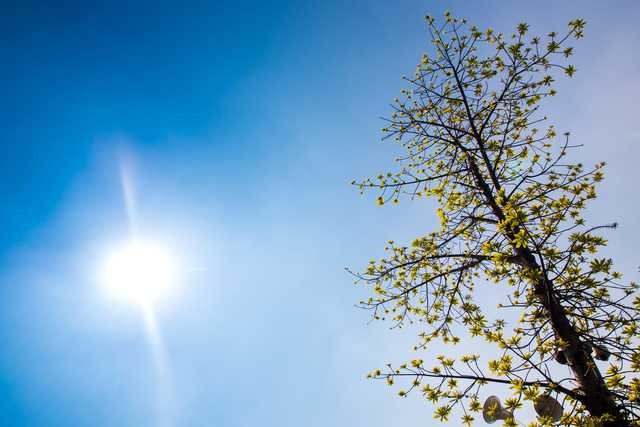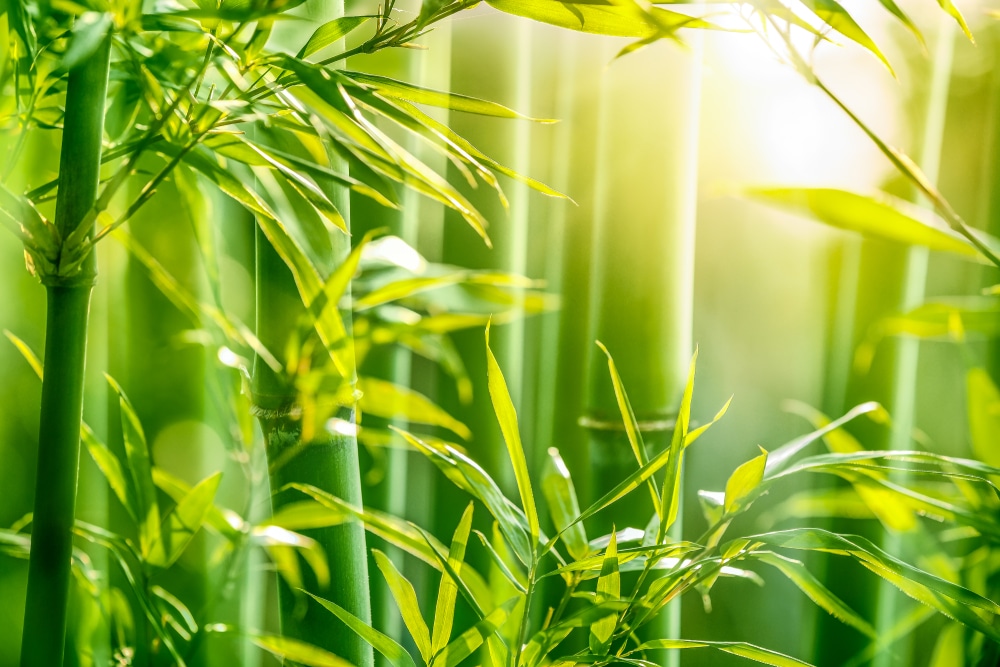
Bamboo is one of the fastest plants you can find globally. There are wide varieties of this plant, and some gardeners have reported Bamboo growing more than 3 feet daily in summer.
With that said, it is not rare to see over five feet of bamboo growth every week in summer, depending upon the type of plant you are planting.
Some gardeners have recently brought up issues with white spots on Bamboo leaves. If you’re struggling with similar problems, let us list some reasons why your Bamboo plant might behave like this.
How to Fix White Spots On Bamboo Leaves?
1. Humidity Issues
Humidity is one of the primary reasons you might notice white spots on Bamboo leaves.
These white spots indicate fungus affecting your plant. If you provide excessive water to the plant and the area around the Bamboo is not adequately ventilated, you will notice fungus growth on the surface of the leaves.
To get ahead of this problem, you need to take action immediately by limiting the amount of water you supply to the plants.
Similarly, you can rely on a dehumidifier to take care of the excess moisture in the air. Some experts also recommend that users remove the infected leaves to prevent the fungus from spreading to other Bamboo parts.
So, depending on the severity of your problem, these fixes should help you with the white spots.
2. Bug Infestation
Mealybugs are one of the most common types of pests that affect Bamboo. These pests leave a white residue on the leaves as they start the infestation.
So, if you’re sure there are no humidity or overwatering issues with your plant, then a bug infestation might be why you’re struggling with white spots on bamboo leaves.
The best action in this situation is to try and contain the infestation by using pesticides from your local mart. Chemical pesticides would yield the most prominent result while making the application easier.
However, many gardeners prefer to use organic methods developed by local experts. So, refer to your local gardeners to see if you can land on organic ways to get around the bug infestation on your plants.
3. White Mold
White Mold fungus is quite common in Bamboo and can cause serious issues depending on severity. If you notice white mold on your Bamboo, the best option is to cut back on the water supply and use sheers to trim the infected parts.
Doing this will improve the survival chances of your bamboo plant, and, likely, the white mold won’t spread to other parts of the plant.
Once infected, dealing with fungus growth on your Bamboo can be challenging. So, it is best to learn about the care tips beforehand.
That way, you can avoid many failures as you know how to care for your plants best. The best strategy to grow a garden is to start small and work your way up as you add more plants.
4. Excessive Sunlight Exposure
Excessive exposure to sunlight, or ultraviolet (UV) rays, is one of the primary reasons white spots appear on Bamboo.
UV rays are known to bleach these plants, and prolonged exposure can cause discoloration of the Bamboo’s leaves and stems.
As such, individuals should ensure that their bamboo plants are not positioned in direct sunlight, or if they must be placed in areas with increased light exposure, they are kept shaded as much as possible.
One way to prevent white spots from appearing is to ensure Bamboo is appropriately covered when exposed to direct sunlight by using canopies, umbrellas, and other protective coverings.
It’s also worth noting that bamboo plants should be placed away from windows when indoors to ensure they don’t receive too much sunlight.
Failing to do so could result in white spots appearing on the leaves and stems of your bamboo plant.
It is important to note that Bamboo can still become discolored if exposed to too much artificial light, such as the kind produced by fluorescent lights and LEDs.
As with sunlight exposure, these plants should be kept from any sources of intense light indoors.
Bamboo placed outdoors can still become damaged or discolored in extreme weather conditions, such as high winds and heavy rains.
Individuals interested in planting Bamboo should ensure their plants are securely planted and have appropriate protection when extreme weather is forecasted.
This will go a long way in preventing white spots from appearing on the bamboo plant.
What to do after your Bamboo Leaves have developed white spots?
Bamboo plants are beautiful and graceful additions to any home or garden. However, when bamboo leaves develop white spots, it can indicate an underlying problem.
White spots on bamboo leaves indicate that the plant is suffering from stress or disease, which could cause damage or even death if not addressed in time.
Fortunately, there are some steps you can take to help your bamboo recover from this condition.
To identify the cause of the white spots on your bamboo leaves to address them appropriately.
Possible causes for this condition include too much sun exposure, low humidity levels, insect infestations, nutrient deficiencies, and fungal infections such as powdery mildew or leaf spot diseases.
If possible, try to reduce any environmental factors that may have caused these conditions, such as providing more shade for your plant if it has been exposed to too much sunlight or increasing humidity if the air around your plant is dry.
You should also inspect your Bamboo closely and look for signs of pests like aphids and mealybugs, which might be causing damage by sucking sap from its leaves, leaving behind telltale white spots in their wake.
If you find evidence of pests present, treat them with appropriate pesticides according to the instructions on the packaging.
If your bamboo leaves show signs of a fungal infection, then it is best to treat them with fungicides as soon as possible to prevent the further spread of the disease.
Make sure you buy fungicides that are suitable for use on Bamboo and follow the manufacturer’s instructions carefully.
Try to improve the overall health of your plant by providing adequate water and feeding it a balanced fertilizer suitable for Bamboo.
By following these steps, you should be able to save your Bamboo from the white spots and restore its vigor.
How to prevent White spots on bamboo leaves?
White spots on bamboo leaves can be a major concern for gardeners and homeowners. Fortunately, there are several methods that you can use to help prevent these white spots from occurring in the first place.
You can keep your bamboo plants healthy and looking their best with a few simple steps. By following these tips, you should be able to restore the health of your bamboo plants in no time!
- Provide Shade: If you’re experiencing white spots on your bamboo leaves due to excessive sun exposure, the first step is to provide shade for the plants. You can do this by using a mesh or netting that covers the plant without blocking out all of the sunlight. This will give your Bamboo some relief from direct sunlight and reduce the chance of sunburn.
- Increase Watering:If the white spots are due to a lack of water, you can increase watering and make sure that your bamboo plants get enough hydration. Generally, it’s best to keep the soil slightly moist but not soggy—water when the top inch or two is dry. To keep them hydrated, you can also try misting your plants with a spray bottle daily.
- Check Fertilization:If you’re fertilizing your Bamboo, ensure you’re not overdoing it, as this can cause white spots on the leaves. Stick to organic or slow-release fertilizers and only use them sparingly.
- Monitor Pests:White spots on bamboo leaves can also be caused by pests such as spider mites or aphids. Monitor your plants for any signs of pests and take action if necessary. This may include insecticides or introducing beneficial predators such as ladybugs or lacewings into the area.
- Prune and Trim: Pruning or trimming your bamboo plants can help to keep them healthy by removing dead leaves or diseased branches. It can also help to clear out any pests that may be causing the white spots on the leaves.
- Improve Air Circulation:Poor air circulation can cause humidity to build up around your plants, leading to white spots on the leaves. To improve air circulation around your bamboo plants, ensure adequate spacing between them and keep them away from walls or other structures.
- Inspect for Disease:White spots can be caused by blight or mildew. If you suspect a disease, inspect your plants closely and take appropriate measures to treat it. This may include using fungicides, removing infected leaves and branches, or improving air circulation.
By following these tips, you should be able to restore the health of your bamboo plants and prevent white spots on their leaves.
Regularly checking up on your plants can help ensure they stay healthy and strong for years to come.



